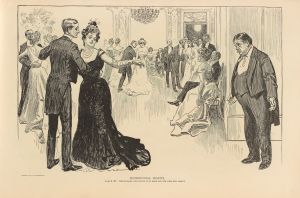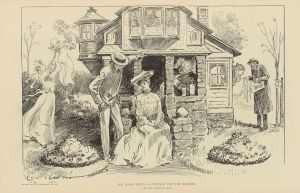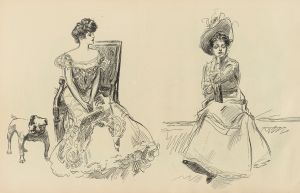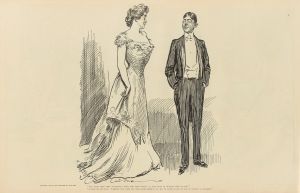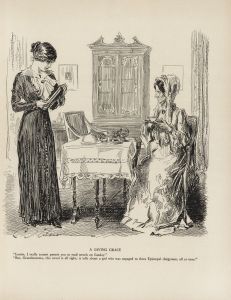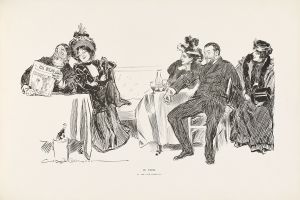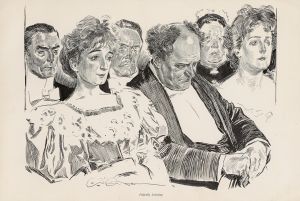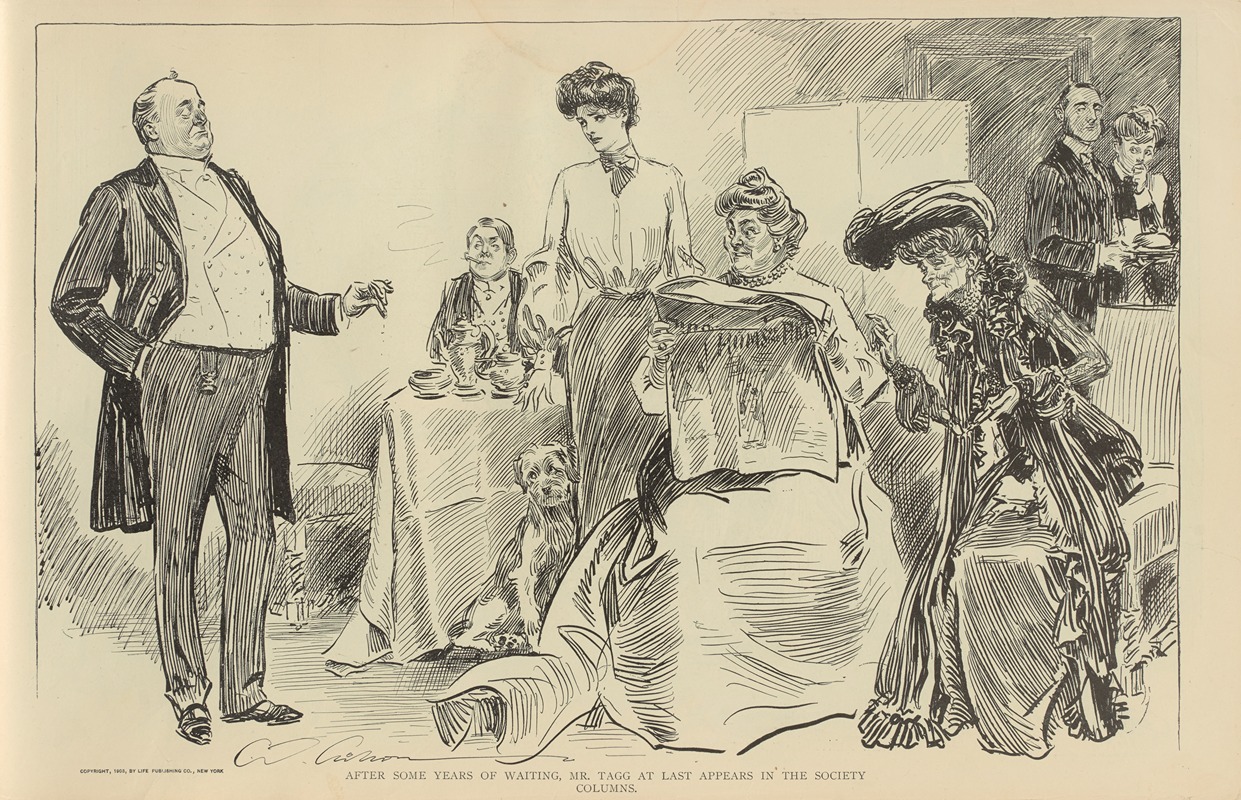
After some years of waiting, Mr. Tagg at last appears in the society columns
A hand-painted replica of Charles Dana Gibson’s masterpiece After some years of waiting, Mr. Tagg at last appears in the society columns, meticulously crafted by professional artists to capture the true essence of the original. Each piece is created with museum-quality canvas and rare mineral pigments, carefully painted by experienced artists with delicate brushstrokes and rich, layered colors to perfectly recreate the texture of the original artwork. Unlike machine-printed reproductions, this hand-painted version brings the painting to life, infused with the artist’s emotions and skill in every stroke. Whether for personal collection or home decoration, it instantly elevates the artistic atmosphere of any space.
"After some years of waiting, Mr. Tagg at last appears in the society columns" is an illustration by Charles Dana Gibson, an influential American graphic artist best known for his creation of the "Gibson Girl," an iconic representation of the American woman at the turn of the 20th century. This particular work is part of Gibson's extensive portfolio that humorously and insightfully captured the social dynamics and cultural norms of his time.
Charles Dana Gibson was born on September 14, 1867, in Roxbury, Massachusetts. He studied at the Art Students League in New York City and began his career as an illustrator in the late 19th century. Gibson's work was widely published in popular magazines such as Life, Harper's Weekly, and Scribner's, where his keen observations of society were both celebrated and critiqued.
The illustration "After some years of waiting, Mr. Tagg at last appears in the society columns" reflects Gibson's typical style, characterized by detailed pen-and-ink drawings that often included satirical commentary on social issues. The artwork likely depicts a humorous take on the aspirations and social climbing prevalent in the society of the time. Gibson's illustrations often explored themes of class, gender roles, and the social expectations of the American upper class.
In this illustration, Mr. Tagg, presumably a character who has long aspired to be recognized by high society, finally achieves his goal of being mentioned in the society columns, which were sections in newspapers dedicated to reporting on the activities and social events of the elite. Such columns were a significant aspect of social life during the late 19th and early 20th centuries, serving as both a record and a form of social validation for those who appeared in them.
Gibson's work, including this illustration, is noted for its wit and its ability to capture the nuances of social interaction. His characters often embody the aspirations, vanities, and follies of their time, making his work not only artistically significant but also culturally insightful. The "Gibson Girl" itself became a cultural icon, representing a new ideal of femininity that was independent, confident, and socially active.
While specific details about the context or reception of "After some years of waiting, Mr. Tagg at last appears in the society columns" are limited, it fits within Gibson's broader oeuvre that critiques and celebrates the social mores of his era. His illustrations remain a valuable resource for understanding the cultural landscape of America during the Gilded Age and the Progressive Era.
Charles Dana Gibson's legacy as an illustrator endures, with his work continuing to be studied for its artistic merit and its commentary on social issues. His ability to blend humor with keen social observation ensures that his illustrations, including the depiction of Mr. Tagg, remain relevant and appreciated by audiences today.







